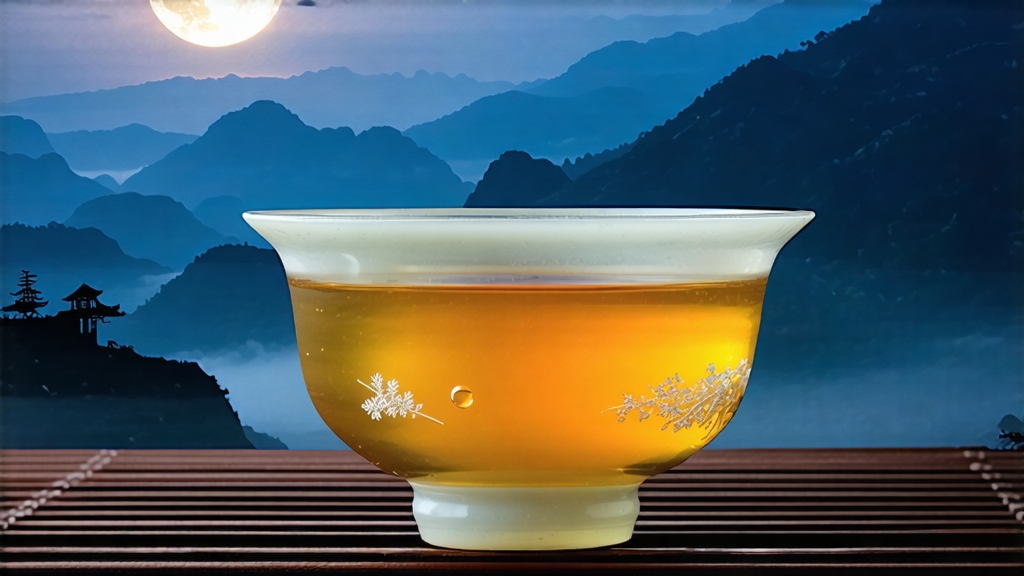
Yunnan province is celebrated the world over for its bold pu-erhs and golden bi luo chun, yet hidden in the cool high valleys between 1,800 and 2,200 m lies a far more elusive treasure: Yue Guang Bai, literally “Moonlight White.” Unlike the better-known Fujian white teas such as Bai Hao Yin Zhen or Bai Mu Dan, Yue Guang Bai is a relatively recent creation, its documented history stretching back only to the late 1990s. Nevertheless, it has already captivated connoisseurs with its paradoxical profile—white tea processing applied to the land of big-leaf assamica, yielding a liquor that is at once airy and voluptuous, like sipping moonlight that has been poured over honeyed orchids.
Origin & Myth
Local tea makers in Jinggu, Lincang and parts of Xishuangbanna recount two intertwined origin stories. The romantic version claims that the leaves are withered exclusively under the full moon so that “yin energy” can gently coax out floral sweetness while preventing the grassy volatility associated with sun-withering. The pragmatic version, whispered in factory yards, is that producers began experimenting with white techniques in the late 1990s to create a value-added product from the abundant daye zhong (large-leaf) cultivar already used for pu-erh. Whatever the truth, the name stuck, and moonlight became the tea’s defining metaphor.
Raw Material: The Big-Leaf Paradox
Classic white tea in Fujian is built on the small-leaf da bai cultivar whose downy buds yield the silvery pekoe so prized in Yin Zhen. Yue Guang Bai turns the rulebook sideways: it employs Camellia sinensis var. assamica, a species known for broad, leathery leaves and high polyphenol content. To tame the inherent briskness, pickers must reach the garden at dawn, when buds are still cloaked in night mist and have not yet switched on their photosynthetic engines. The standard pluck is one bud plus one or two adjacent leaves, slightly larger than the Fujian benchmark yet smaller than the summer pu-erh pick. This careful selection gives the finished tea its characteristic “one side silver, one side dark” appearance: the bud retains a downy white cloak while the leaf underside, shielded from direct moonlight or very soft indoor light, oxidizes to a charcoal-laced mahogany.
Crafting Moonlight: A Rhythm of Shadows
Step 1: Night Harvest
Although total moonlight withering is more marketing than mechanics, many small producers still pick between 3 a.m. and sunrise to keep leaf temperature low and enzymatic activity gentle. Baskets are woven from bamboo strips wide enough to allow ventilation yet tight enough to prevent compression.
Step 2: Indoor Withering
Leaves are spread on raised bamboo trays in single, non-overlapping layers. Temperature is maintained at 22–26 °C with relative humidity around 65 %. No fans blow directly on the leaf; instead, cross-ventilation is achieved by opening clerestory windows aligned with prevailing mountain breezes. This phase lasts 36–48 h, during which the leaf loses roughly 70 % of its moisture and the green chlorophyll begins to degrade into pheophytin, lending the upper surface a silvery jade hue.
Step 3: Shade-Turning
Every six hours the tea maker lifts the trays and gives the leaves a soft toss—more a caress than a flip—to ensure even withering. The motion must be slow enough to prevent edge bruising yet vigorous enough to redistribute internal moisture. It is during these turns that the characteristic “black back” develops; the leaf’s underside, pressed against the tray and slightly warmer, undergoes a very light enzymatic oxidation, not unlike a shy handshake between white and black tea processing.
Step 4: Low-Temperature Bake
Once the central vein becomes brittle enough to snap rather than bend, the leaf is transferred to a charcoal-heated bamboo tunnel dryer set at 35–40 °C. The goal is not to roast but to “lock the moonlight,” halting oxidation while preserving volatile terpenes responsible for the tea’s honeysuckle top notes. After 20 min the leaf is cooled quickly on woven rattan mats, then rested for 24 h so that residual moisture can migrate outward—an echo of the traditional pu-erh “mao